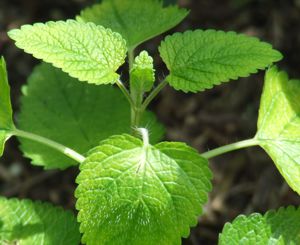By Gaye Levy
Guest writer for Wake Up World
Herbs have been used for centuries to soothe and to heal. According to Wikipedia:
Herbs have long been used as the basis of traditional Chinese herbal medicine, with usage dating as far back as the first century CE and before. Medicinal use of herbs in Western cultures has its roots in the Hippocratic (Greek) elemental healing system, based on a quaternary elemental healing metaphor.
With such a long history of use, herbs most certainly have a place in the survival garden. With that in mind, today I offer a few suggestions to get you started in creating your own healing garden.
Healing Herbs for the Healing Garden
Basil: People don’t usually think of basil as a healing herb and yet traditionally, it is called the “king of herbs”. It is used medicinally as a natural anti-inflammatory and is thought to have mild antiseptic functions. Some healing uses are for flatulence, lack off appetite, nausea and cuts and scrapes.
It is also superb on spaghetti and in pesto but then you already knew that. Basil is an annual plant so you will have to start anew each year.
German Chamomile: Chamomile is one of the most popular herbs in the Western world. Its flower heads are commonly used for infusions, teas and slaves. These in turn can be used to treat indigestion, anxiety and skin inflammations. As a tea, it serves as a mild sedative to help with sleep.
Feverfew: This perennial is a member of the sunflower family and has been used for centuries in European folk medicine as a remedy for headaches, arthritis, and fevers. The name feverfew comes from a Latin word meaning “fever reducer.”
It’s many uses include easing headache pains – especially migraines. This is done by chewing on the leaves. A tea made from the leaves and flowers is said to relieve the symptoms of arthritis.
Lemon Balm: Lemon balm is a member of the mint family. Considered a calming herb, it has been used as far back as the Middle Ages to reduce stress and anxiety, promote sleep, improve appetite, and ease pain and discomfort from indigestion. Even before the Middle Ages, lemon balm was steeped in wine to lift the spirits, help heal wounds, and treat venomous insect bites and stings.
As with many other herbs in your healing garden, lemon balm promotes relaxation and a sense of calm.
Parsley: While not one of my favorites, there is nothing like a sprig of parsley to take away bad breath. It is no wonder that this biennial (meaning it lives for two years) is used to decorate and garnish plates in the fanciest of restaurants.
When brewed as a tea, parsley can help supplement iron in a person’s diet, particularly for those who are anemic. Drinking parsley tea also boosts energy and overall circulation of the body, and helps battle fatigue from lack of iron. Other uses? Parsley tea fights gas and flatulence in the belly, kidney infections, and bladder infections. It can also be an effective diuretic.
Sage: Did you know that the genus name for sage is “salvia” which means “to heal”? In the first century C.E. Greek physician Dioscorides reported that sage stopped bleeding of wounds and cleaned ulcers and sores. He also recommended sage juice in warm water for hoarseness and cough.
In modern times, a sage tea is used to sooth mouth, throat and gum inflammations. This is because sage has excellent antibacterial and astringent properties.
Thyme: Back during medieval times, thyme was given to knights before going in to battle. The purpose was to infuse this manly man with vigor and courage.
These days, thyme used to relieve coughs, congestion, indigestion and gas. This perennial is rich in thymol, a strong antiseptic, making thyme highly desirable in the treatment of wounds and even fungus infections. Thyme is a perennial that does well, even in cooler, Pacific Northwest climates.
Rosemary: Long ago, rosemary was known as ‘the herb of remembrance.’ Even today, in places like Australia and New Zealand, it is used as a symbol of remembrance since it is known to help sharpen mental clarity and stimulate brain function. You might recall that many statues of the ancient Greeks and Romans show men wearing sprigs of rosemary on their heads – signifying mental acuity.
The needles of the delightfully fragrant rosemary plant can be used in a tea to treat digestive problems. The same tea can also be used as an expectorant and as a relaxing beverage that is helpful for headaches. Other healing uses include improving memory, relieving muscle pain and spasms, stimulating hair growth, and supporting the circulatory and nervous systems.
Lavender: I saved my personal favorite for last. Of course it helps that I have an abundant amount of fragrant lavender in my yard.
A tea made from lavender has many uses with one of the foremost being it’s ability to have a calming effect on a person’s mind and body. To that end, lavender can promote a sense of well-being and alleviate stress. It is also useful for dealing with various gastrointestinal issues such as upset stomachs and and flatulence.
Because it is a strong antiseptic, lavender tea, when applied topically, can help heal cuts, wounds and sores. It can also be used to mitigate bad breath.
How to Make an Herbal Tea
The process of making a pot of herbal tea is in itself healing. Perhaps that has something to do with the proactive effort involved in doing something positive for one’s own self and well-being. And luckily, brewing an herbal tea is easy.
To make an herbal tea, first bring some cool water to a boil. While waiting for the water to boil, fetch a non-mental container that will be used to brew the tea. A quart mason jar works nicely or this purpose. You do not want to use a metal container since the metal may interfere with the purity and taste of the tea.
Add 2 tablespoons of fresh (or 1 tablespoon of dried herb or crushed seed) to the empty pot or jar for each cup of water. Then, and this is the important part, add an extra 2 tablespoons of fresh (or 1 tablespoon of dried) herbs “for the pot.” So, for example, if you are making 2 cups of hot tea, you would use 6 tablespoons of fresh herbs or 3 tablespoons of dried herbs.
Pour the boiling water over the herbs and let them steep, covered, for about 5 minutes give or take. There is no exact time since everyone’s strength preference is difference. When ready, strain the herbs and pour the tea into a cup. At this point you may want to garnish your heavenly – and healing – cup of tea with honey, citrus fruits or addition herb springs.
For iced tea, increase the quantity of herbs in the basic recipe by 1 1/2 to allow for dilution from the melting ice.
The Final Word
In reading about these herbs, you may have noticed that many are reputed to have the same or similar healing qualities. Do they work? I can personally vouch for Rosemary and Lavender which I have used as both a tea and as an essential oil. I leave it up to you though, to be the final judge.
One thing that is true is that with a little time and for a nominal cost, you can grow the makings for healing teas, infusions and balms in your own garden. Add a dose of sun and some rich pitting soil and you will be set to go. Just keep in mind that while perennial plants will flourish over the winter and will be there for you the following spring, annual plants must be reseeded or restarted every year.
If you would like to learn more about the healing properties of various herbs, the University of Maryland Medical Center has an excellent web site with a lot of useful information about herbs and other alternative medicine topics. Click on “herbs” then scroll down the right to the particular herb you would like to learn about.
Also note this disclaimer: I am not a doctor and anything I write should not be construed as medical advice. If you have a serious condition, consult a physician or nurse practitioner if one is available. And if not, consult a reliable reference such as my favorite, The Doom and Bloom Survival Medicine Handbook.
Enjoy your next adventure through common sense and thoughtful preparation!
Gaye
About the Author
Gaye Levy lives and teaches the principles of a sustainable, self-reliant and stylish lifestyle through emergency preparation and disaster planning. She does this through her website at BackdoorSurvival.com, an online preparedness blog that provides lifestyle tools, tips, and thoughts to guide you through the back door of life in the 21st century. With an emphasis on prepping and survival, she writes about and shares practical, thoughtful, and inspirational tools for survival in uncertain times.
Backdoor Survival is currently listed on the Survival Top 50. In addition, Gaye is a frequent guest on the Preparedness Radio Network and the soon to be author of a book on 21st century preparedness. Also known as SuvivalWoman, Gaye speaks her mind and delivers her message with optimism and grace, regardless of mayhem swirling around us.
You can find Gaye through her website at Backdoor Survival, on the Backdoor Survival Page on Facebook, and as Survival Woman on Twitter.

If you've ever found value in our articles, we'd greatly appreciate your support by purchasing Mindful Meditation Techniques for Kids - A Practical Guide for Adults to Empower Kids with the Gift of Inner Peace and Resilience for Life.
In the spirit of mindfulness, we encourage you to choose the paperback version. Delve into its pages away from screen glare and notifications, allowing yourself to fully immerse in the transformative practices within. The physical book enriches the learning process and serves as a tangible commitment to mindfulness, easily shared among family and friends.
Over the past few years, Wake Up World has faced significant online censorship, impacting our financial ability to stay online. Instead of soliciting donations, we're exploring win-win solutions with our readers to remain financially viable. Moving into book publishing, we hope to secure ongoing funds to continue our mission. With over 8,500 articles published in the past 13 years, we are committed to keeping our content free and accessible to everyone, without resorting to a paywall.







